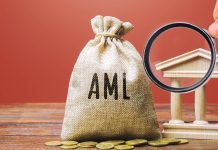This article examines some of the current trends around regulatory and policy outlook as it connects to cryptoassets. Specifically, this piece outlines and describes why, despite being a predictable result of regulatory catch-up amid a desire to reign in some unethical actors, crypto crackdowns and bans are not the answer. Additionally, several key policy questions are included to form the basis for better and more robust policy conversations
moving forward.
Based on recent headlines, both in the United States and in other jurisdictions, there has seemingly been a shift in the how policymakers view cryptoassets and blockchain technology more broadly. Stated simply, the policy outlooks has seemingly shifted from relegating these sectors to the backburner to actively cracking down on these sectors and the market participants involved therein. Cryptoasset bans in major economies such as China, increased regulatory crackdowns in the United States, and a simmering sentiment that stablecoins post a systemic threat to global financial stability all point in the same direction. After ignoring or not understanding how blockchain and cryptoassets intersect with the rest of the global economy policymakers and regulators are moving aggressively to corral the fast developing space.
Such an approach will invariably lead to policy errors, unforeseen consequences, and a chilling effect on the innovative thinking that has driven such creativity and development in the sector at large.
This is not to say that cryptoassets should be left unregulated, and any opinions stating that this is the current case are incorrect in any event – there is certainly a place for responsible and well-informed regulation in the cryptoasset sector. Every business industry requires reasonable regulation and frameworks to protect both the consumers of these products as well as the market actors themselves.
Recent developments in the United States, however, indicate that this does not seem to be the case. The United States Senate recently (August 2021) approved the long-awaited infrastructure bill, totaling over $1 trillion in expenditures, but buried in the over 2,700-page document was a clause related to crypto. Distilling the technical language the primary requirement and impact of said requirement would be that any organization or individual involved in the processing, validating, or approving of crypto transactions for consideration would need to fulfill the same tax reporting and compliance obligations as a full-fledged crypto exchange such as Coinbase, Binance, or Kraken.
Such a compliance, reporting, and payment burden would render operating in the cryptoasset sector a non-started for smaller firms, discourage new capital providers from investing into new ventures, and potentially drive new investment into other jurisdictions. While the final language of this bill is still pending, the outlook for crypto investment, creativity, and development has turned decidedly chilly in recent months. That is a near-sighted and incomplete view of the situation; let’s take a look at why bans, crackdowns, and onerous regulations are not the solution policymakers are looking for.
Crypto attracts capital
It should be obvious at this point, but the blockchain and cryptoasset attracts and retains both financial capital and human capital to where it is encouraged and supported the most. Put simply, not every country or economic block in the world would be working on developing central bank digital currencies and other blockchain applications if the economic benefits were not obvious. The United States, home of the global reserve currency and the most liquid capital market in the world, has received significant benefit from the innovation and capital creation that has accompanied the crypto industry to date.
Cracking down, banning, or imposing onerous regulations on the blockchain and cryptoasset would simply lead to these ideas, individuals, and creators relocating to other jurisdictions. Crypto truly is a global industry, and making business difficult in one area will invariably lead to relocating to another, more hospitable location. Taxes, regulation, and policy decisions are not normally items that entrepreneurs are terribly interested in discussing, versus the business or industry itself, but these are critical factors toward creating a welcoming and friendly ecosystem for these organizations.
Crypto has already delivered
One common refrain among policymakers is that blockchain and crypto has been long on potential and short on delivery; this is an incomplete view of the ecosystem. Far from the early days of the sector, when engagement was limited to a relatively small group of expert users and coders, blockchain and cryptoassets are now easily available to any individual or institution. More specifically, bitcoin has been the best performing asset in the United States public markets since its introduction; it has truly democratized the wealth creation process that investing so often promises to deliver.
Setting aside the wealth creation aspect of crypto for the time being, blockchain is already being used by hundreds of major organizations the world over. For example, Forbes has published for several years an annual listing of organizations that have integrated blockchain into core operations with revenues totaling in the billions of USD. Benefits of increased blockchain and cryptoasset integration increased improved traceability of information, the ability to audit and confirm data in real time, lower fees and costs for payments, and better security over digital ecosystems at large.
Framed in that light, and supported by the reality that virtually every company of economic significance has invested in blockchain and crypto, the benefits of these technologies have clearly already manifested.
Good for national security
A common, and troubling, refrain that has recently gained steam in the ongoing debate around the growth of cryptoassets is that blockchain and crypto pose a threat to national security; the opposite is true. Acknowledging the improvements and upgrades that have been made to the international payment system over the last several decades the current payments infrastructure is still out of date when compared to the other technological tools and platforms that are available. Wires, ACHs, and other bank enabled transfers can take days to settle, carry with the hefty fees, and be time consuming to complete; blockchain and cryptoassets address these issues head-on.
Additionally, and from a U.S.-centric perspective, one of – if the largest – economic advantage that U.S. enjoys is the dollar’s status as the global reserve currency. This is privilege and not a right; other currencies have played this role before and there is no guarantee the dollar will always hold this role. In order to maintain this status, and like any other economic asset, the dollar will need to be upgraded and modernized for the 21st and 22nd centuries.
It might be tempting, especially from a policy making perspective, to treat the rapid growth and development of blockchain and cryptoassets as an existential threat to the status quo, but that is an incomplete and short-sighted perspective. Instead, cryptoassets should be viewed as a positive development and natural maturation of the online ecosystem and environment; digital and virtual payments have long been a mainstay of business and enterprise, and there is no reason to think that blockchain or cryptoassets will function any differently.
What this means from a policy perspective is that a more nuanced and balanced approach should be taken with regards to how blockchain technology and cryptoasset instruments are viewed and integrated into the mainstream financial markets. Crypto based and enabled transactions have quantifiable benefits that have been recognized and acknowledged by some of the largest and most established financial institutions the globe over; it makes sense that nation-states will seek to adopt a similar approach.
In terms of what this means from a direct, or action-oriented approach, there are several steps that can be taken in terms of what policymakers can actually do in terms of seeking to adopt blockchain technology or cryptoasset financial instruments into everyday transactions. What follows below is not meant to be an exhaustive listing, but should rather serve as a means to continue the conversation around this fast growing and emerging area.
- Which cryptoassets are to be accepted by merchants and individuals in the jurisdiction in question, i.e. not every cryptoasset will be accepted as equally by every institution in question.
- How will these cryptoassets be held and stored in terms of asset management, or in other words how will organization store and maintain custody over cryptoassets?
- Regarding cryptoassets, is there a policy in place around how said cryptoassets will be reported on the financial statements of the organization?
- Does it make sense to, alongside the development of crypto standards and operating guidelines, simultaneously build out similar guidelines for smart contacts, the programs that enable blockchains to communicate with other technology systems?
- Is it reasonable to assess which types of cryptoassets will work most appropriately in certain marketplaces or use cases, i.e., the development of crypto products and services will change the narrative around crypto adoption; how should this be assessed?
Blockchain and cryptoassets are a fundamentally positive technology and suite of tools that have both the potential to, and actually influencing are, influencing how business decisions across different economic sectors are conducted. As with any new technology or innovative way of doing things, there will invariably be hiccups, disruptions, and downturns that occur; that is a perfectly normal part of the business and technology cycle. Policymakers the world over are often in a position of playing catch up to new and innovative technology, and so it is important for industry actors to serve in a dual role as educators as well as market actors. Policy oversteps will happen from time to time, but that is no excuse to simply let these policy errors define the market moving forward. Crypto needs relation but it needs to be smart regulation; crackdowns and bans are neither smart nor conducive to the continued growth of this sector.
About the Author
Dr. Sean Stein Smith is a professor at the City University of New York – Lehman College. He serves on the Advisory Board of the Wall Street Blockchain Alliance, where he chairs the Accounting Work Group. Sean sits on the Advisory Board of Gilded, a TechStars ’19 company and AICPA-CPA.com startup accelerator participant, and serves as a Strategic Advisor to the Central Bank Digital Currency Think Tank. He has a weekly column with Forbes, in the Crypto & Blockchain vertical. Sean is also the immediate past chairperson of the NJCPA’s Emerging Technologies Interest Group (#NJCPATech), where he hosts the NJCPA TechTalk Podcast, and is the President-Elect of the NYSSCPA Manhattan-Bronx Chapter. He is a Visiting Research Fellow at the American Institute for Economic Research, with a book due out in Q4 2021. Sean is a sought after speaker on the topic of crypto and blockchain, and is an award winning researcher.
Disclaimer: This article contains sponsored marketing content. It is intended for promotional purposes and should not be considered as an endorsement or recommendation by our website. Readers are encouraged to conduct their own research and exercise their own judgment before making any decisions based on the information provided in this article.


































































